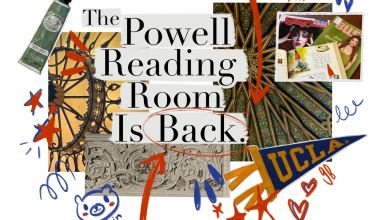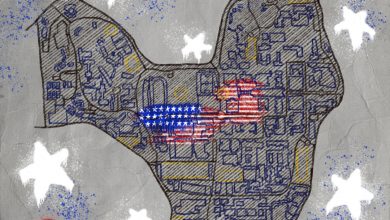Three Weeks (and Beyond): An Artistic Vision to Stop Rape
 In May of 1977, artist Suzanne Lacy diligently recorded, over the course of three weeks, every rape that was reported to the Los Angeles Police Department. Her canvas? A twenty-five foot map of Los Angeles, publicly installed in the City Mall. Her technique? Stenciling RAPE on her municipal “canvas” in bold red ink, flagging where the acts of sexual violation took place. Her purpose? To expose the hushed and hidden crime of rape, force the public to acknowledge the severity of sexual violation and fight for the justice of rape victims.
In May of 1977, artist Suzanne Lacy diligently recorded, over the course of three weeks, every rape that was reported to the Los Angeles Police Department. Her canvas? A twenty-five foot map of Los Angeles, publicly installed in the City Mall. Her technique? Stenciling RAPE on her municipal “canvas” in bold red ink, flagging where the acts of sexual violation took place. Her purpose? To expose the hushed and hidden crime of rape, force the public to acknowledge the severity of sexual violation and fight for the justice of rape victims.
Lacy’s project, titled “Three Weeks in May,” was displayed during the heart of the anti-rape movement. At the time, “the concept of rape trauma was absent in psychiatric literature,” said Harriet Kerr, director of the rape treatment center “Prevention Education.” In the 1970s, a victim of rape had to wait in the hospital while “emergencies” were handled first, police did not deal with cases of acquaintance rape, and a woman’s word regarding rape was not trusted in the legal system – her private sexual history could, in fact, be used against her in the courtroom.
While the past 40 years have witnessed tremendous progress in rape awareness, treatment and prevention, this progress cannot be taken for granted; the fight against rape must continue. So said Suzanne Lacy, who is currently repeating her 1977 performance art project under the title, “Three Weeks in January.” From January 9 until February 1, Lacy is again recording reported rapes in Los Angeles on a new digital mural, the “2012 LA Rape Map.” This map stands on the front side of the Deaton Auditorium, located next to LAPD Headquarters in downtown Los Angeles.
On January 12, Suzanne Lacy, Mayor Antonio Villaraigosa, LAPD Chief Charles Beck and employees of rape treatment centers spoke to the media about the project’s history and significance. Nearly everyone in attendance, from speakers to photographers, displayed a bright sticker on their clothing. Each sticker bore the simple phrase: “I know someone, do you?”
During the press conference, Lacy called rape prevention an “urgent agenda.” She shared that a sense of outrage initially inspired her to conduct “Three Weeks in May” thirty-five years ago. Among feminist groups in the 1970s, Lacy had noticed that out of every gathering of six or so women, one or two of these women were victims of rape. Lacy said her project is a demonstration that “every rape counts.”
Mayor Villaraigosa said the 2012 project will “show us just how far we need to go for victims, their families and justice.” He referred to rape as “an issue that should be important to every single one of us,” for although perhaps not all of us can say, “I know someone, do you?,” we all have empathy for those who have been wrongly violated.
Police Chief Charlie Beck stated that we must not forget: rape is not on the decline in other cities. (In Los Angeles in 2011, rapes were down 20% from the previous year). We must continue to increase awareness, for shared knowledge is one of the core ways in which we can keep women safe. “Rape does not just commit one crime,” stated Beck, explaining how multiple people are affected by a single act of sexual assault. “A woman who comes forward not only brings justice to herself, but to other victims.”
“’Three Weeks in January’ is a model of collaboration; it is a call to action for the city and community to not only embrace these three weeks, but to extend it to fifty-two weeks and beyond,” said Patti Giggans, executive director “Peace Over Violence.” “What do we do after forty years of progress?” asked Giggans. “What paradigm shifts do we need to have and what questions do we need to ask?” As the 2012 Rape Map accumulates red ink, we must all ask ourselves what further actions we can take to help stamp out rape.
“Three Weeks in January” is much more than a map. A complete event schedule is available here.




